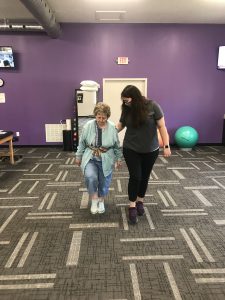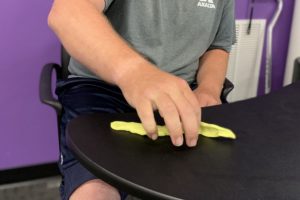How Physical Therapy Can Help with Patellar Dislocation
August 13, 2024
Patellar dislocation, commonly referred to as a dislocated kneecap, is a painful and often debilitating injury. It occurs when the patella (kneecap) slips out of its normal position, usually to the outside of the knee. This injury can result from a direct blow, sudden change in direction, or twisting movement, and it’s often seen in athletes, particularly in sports that involve jumping, cutting, or rapid changes in direction.
The patella is a small bone at the front of the knee that sits in a groove at the end of the femur (thigh bone). It plays a critical role in the mechanics of the knee joint, helping to protect it and ensuring smooth movement. When the patella dislocates, it can cause damage to the surrounding ligaments, cartilage, and bone, leading to pain, swelling, and instability.
Following a patellar dislocation, it’s essential to allow the knee to heal properly. In many cases, physical therapy plays a crucial role in the recovery process, helping patients regain strength, stability, and function in their knee.
Physical therapy for patellar dislocation focuses on several key goals:
- Reducing Pain and Swelling: In the early stages of recovery, managing pain and swelling is vital. Physical therapists may use techniques such as ice therapy, compression, and elevation to help reduce inflammation. Modalities like electrical stimulation or ultrasound therapy can also be employed to manage pain.
- Restoring Range of Motion: A dislocated patella can lead to stiffness in the knee joint. Gentle range-of-motion exercises are introduced early in the rehabilitation process to prevent the knee from becoming stiff and to promote flexibility. These exercises are designed to restore normal movement while minimizing stress on the healing structures.
- Strengthening the Muscles Around the Knee: Strengthening the quadriceps, hamstrings, and hip muscles is essential for stabilizing the knee joint and preventing future dislocations. The quadriceps play a significant role in keeping the patella in its proper alignment. Physical therapists design individualized exercise programs that target these muscle groups, gradually increasing intensity as the patient progresses.
- Improving Proprioception and Balance: Proprioception refers to the body’s ability to sense its position in space. After a patellar dislocation, proprioception can be impaired, increasing the risk of re-injury. Physical therapists use balance exercises and techniques such as wobble boards or single leg stands to improve proprioception and ensure the knee can respond effectively to various movements.
- Enhancing Functional Movement: As recovery progresses, physical therapists introduce exercises that mimic everyday activities or sport-specific movements. These exercises help patients regain confidence in their knee and ensure they can return to their normal activities safely. For athletes, this phase may include agility drills, plyometrics, and sport-specific training.

- Preventing Recurrence: One of the most important aspects of physical therapy for patellar dislocation is preventing future episodes. By strengthening the muscles around the knee, improving flexibility, and enhancing proprioception, physical therapy significantly reduces the risk of another dislocation. Patients are also educated on proper movement techniques and exercises to maintain knee health long-term.
Patellar dislocation can be a challenging injury, but with the right approach to physical therapy, patients can recover fully and regain their quality of life. The comprehensive rehabilitation provided by physical therapists not only addresses the immediate symptoms of the injury but also equips patients with the tools and knowledge to prevent future occurrences. Whether you’re an athlete eager to return to your sport or someone looking to regain normal function in your knee, physical therapy offers a path to recovery that is both effective and empowering.
By following a structured physical therapy program, individuals who have experienced a patellar dislocation can look forward to a strong, stable, and pain-free knee.









